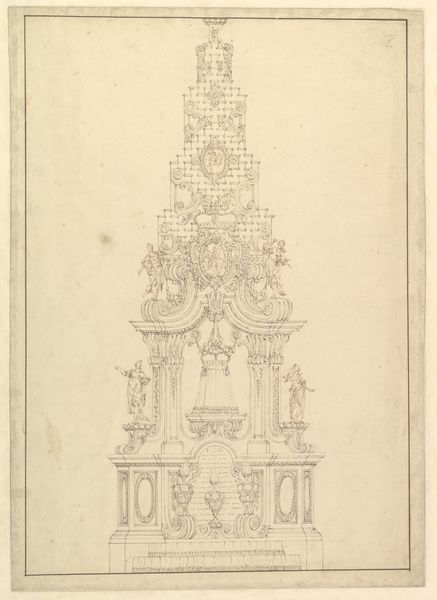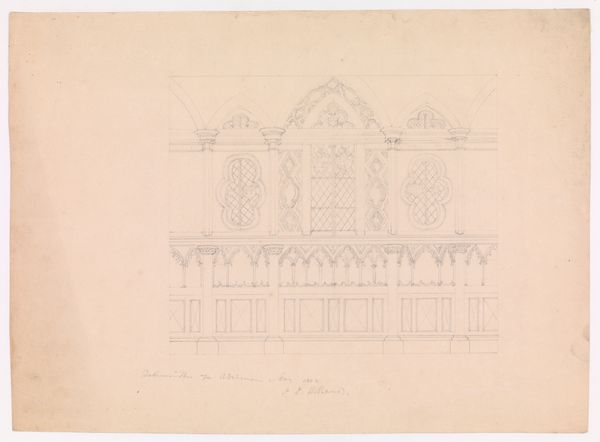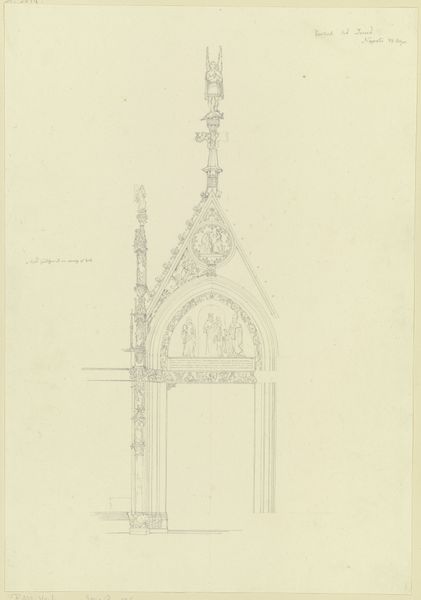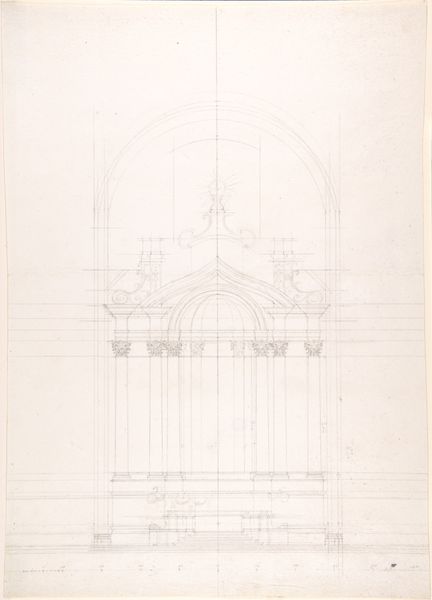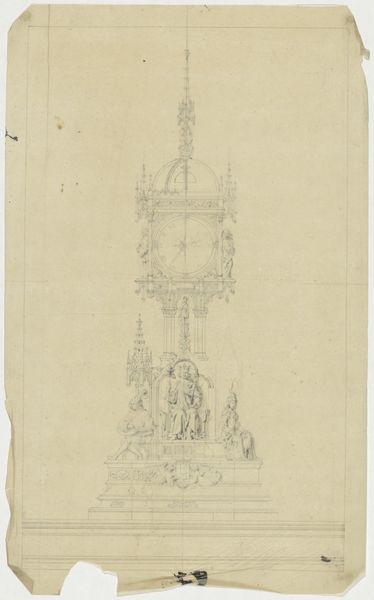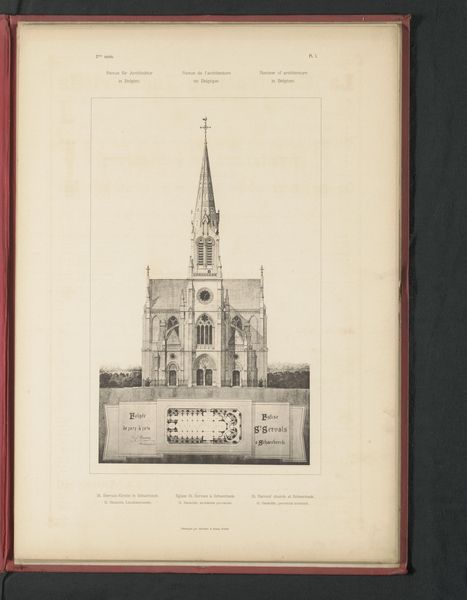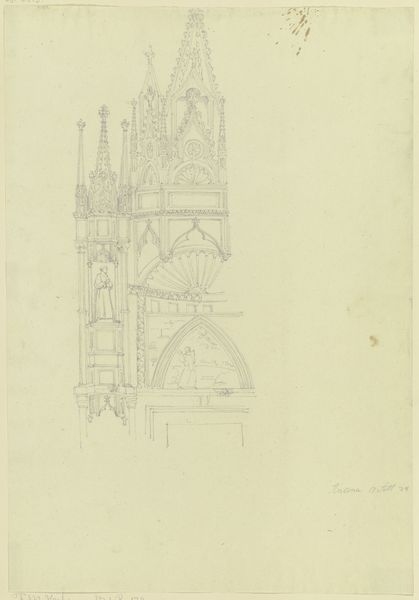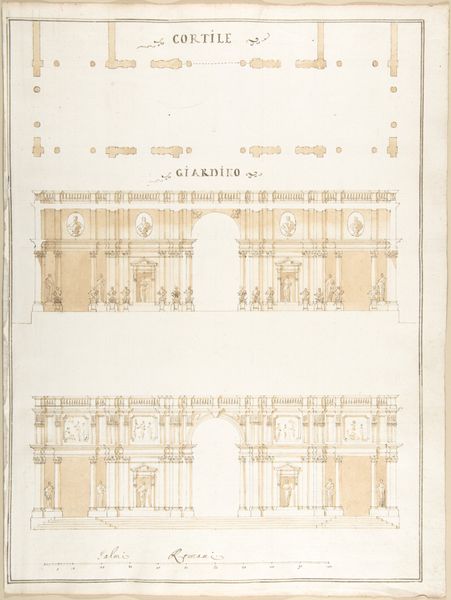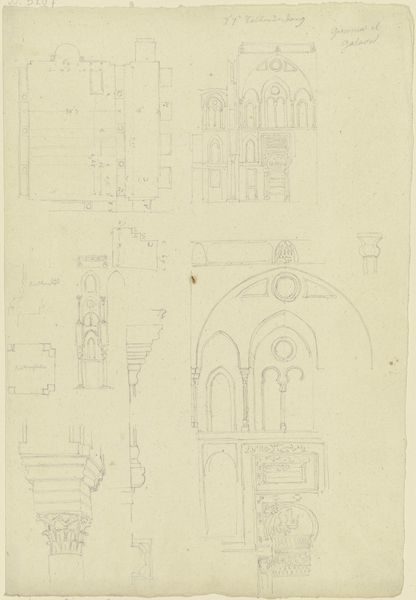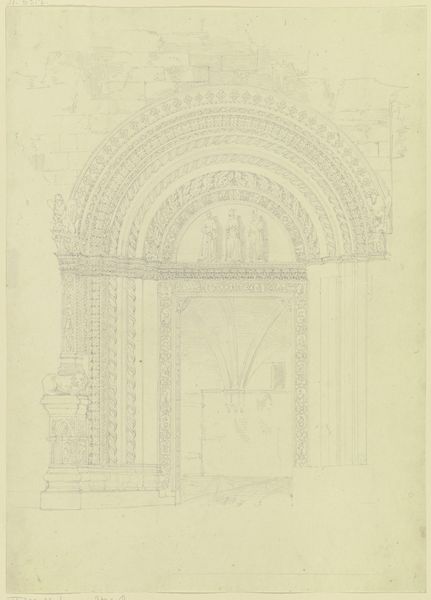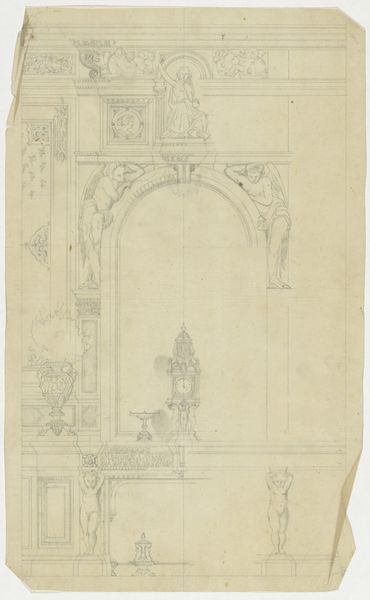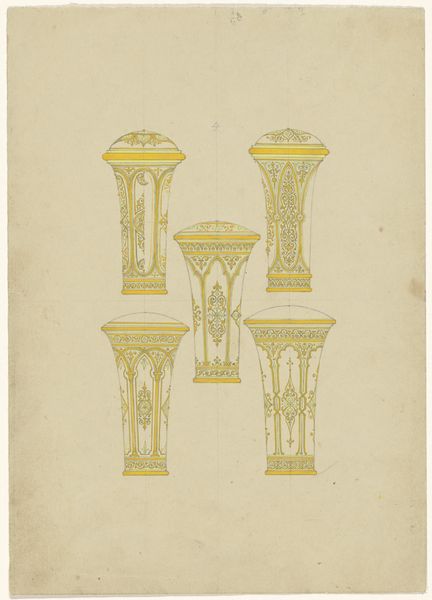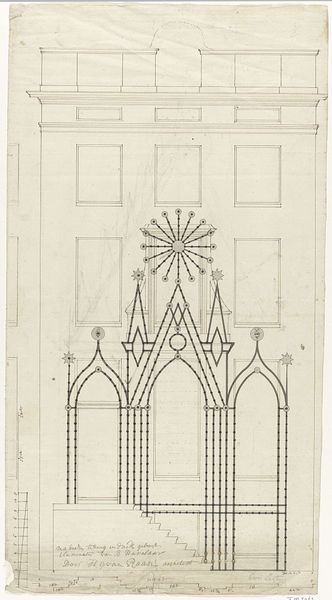
Entwurf zu einem Kaiserbrunnen auf dem Römerberg nebst eigenhändiger Erklärung 1856
0:00
0:00
drawing, paper, ink, pencil, architecture
#
drawing
#
neoclacissism
#
16_19th-century
#
paper
#
ink
#
german
#
pencil
#
cityscape
#
history-painting
#
architecture
Copyright: Public Domain
Editor: This is Johann David Passavant’s “Entwurf zu einem Kaiserbrunnen auf dem Römerberg nebst eigenhändiger Erklärung,” or “Design for an Imperial Fountain on the Römerberg with Handwritten Explanation,” made in 1856. It’s a detailed drawing in ink, pencil, and paper, currently housed at the Städel Museum. It has this very technical feel because it’s a proposal. What strikes you most about its form and function? Curator: It's interesting to consider the labour embedded in this proposal, isn't it? We often think of art as this purely aesthetic pursuit, but designs like this reveal the intensive planning, the calculations of materials and manpower that go into realising large-scale public works. What social conditions made a grand fountain, and not a communal garden or public baths for the people? Editor: That’s a great point. What does the material context suggest about the aspirations of 19th-century Frankfurt? Curator: Exactly. Notice the intricate detailing and Neoclassical style. This isn't simply about providing water. It’s about projecting power, order, and a specific vision of German history through accessible architectural infrastructure. The question becomes: who benefits from that projection and from this distribution of financial capital? Who would have the material resources to make the fountain in the image become real? Editor: So, reading the artwork through a material lens shifts the focus from aesthetics to socio-economic implications? Curator: Precisely. We move from appreciating surface beauty to interrogating how resources were channeled, and whose interests were served in creating a monumental object for the urban landscape. It encourages critical examination of consumption, public art, and labor. Editor: I hadn't considered that the means of making such an elaborate public artwork themselves are a reflection of the society that commissions them. Curator: It really reframes how we value the artistic process, doesn’t it? Every object tells a story of the material conditions of its making.
Comments
No comments
Be the first to comment and join the conversation on the ultimate creative platform.
